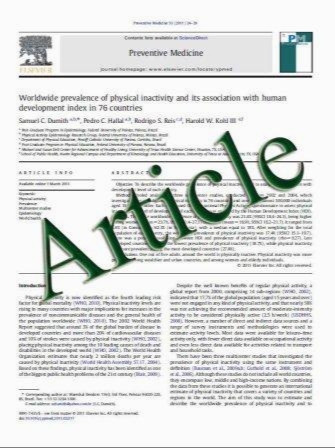Association of SMAD2 polymorphisms with bone mineral density in postmenopausal Korean women
- نوع فایل : کتاب
- زبان : انگلیسی
- مؤلف : B.-J. Kim & J.-Y. Hwang & B.-G. Han & J.-Y. Lee & J. Y. Lee & E. K. Park & S. H. Lee & Y.-E. Chung & G. S. Kim & S.-Y. Kim & J.-M. Koh
- چاپ و سال / کشور: 2010
Description
Summary In a candidate gene association study, we found that SMAD2 promoter alleles and haplotypes were significantly associated with bone mineral density (BMD) at the lumbar spine and various proximal femur sites. Our results suggest that SMAD2 polymorphisms may be one of genetic determinants of BMD in postmenopausal women. Introduction SMAD2, which is the specific intracellular transducer of TGF-ß, is thought to participate in bone metabolism by playing a critical role in the development and function of osteoclasts and osteoblasts. We performed association analyses of the genetic variation in SMAD2 to ascertain the contribution of this gene to BMD and risk of osteoporotic fracture. Methods We selected three SMAD2 promoter singlenucleotide polymorphisms (SNPs) based on heterozygosity and validation status. Postmenopausal Korean women (n= 1,329) were genotyped for these SNPs, and their BMD and risk of fractures were assessed. BMD at the lumbar spine and proximal femur was measured using dual-energy X-ray absorptiometry. P values were corrected for multiple testing by the effective number of independent marker loci (Pcor). Results We found that SMAD2 -35302C>T, -34952A>G, and ht2 were significantly associated with BMD at both the lumbar spine and femur neck (Pcor=0.020–0.046), whereas SMAD2 -36201A>G and ht1 affected the femur neck BMD (Pcor=0.018–0.031). The genetic effects of these three polymorphisms on BMD at the lumbar spine and femur neck were risk-allele dependent in additive model. The three polymorphisms and two hts were also significantly associated with BMD at other proximal femur sites, such as the total femur, trochanter, and femur shaft (Pcor=0.001–0.046). However, none of the polymorphisms or hts was associated with an increased risk of fracture. Conclusions Our results suggest that SMAD2 polymorphisms may be one of genetic determinants of BMD in postmenopausal women
Osteoporos Int (2011) 22:2273–2282 DOI 10.1007/s00198-010-1450-8 Received: 9 July 2010 / Accepted: 24 September 2010 / Published online: 30 October 2010


